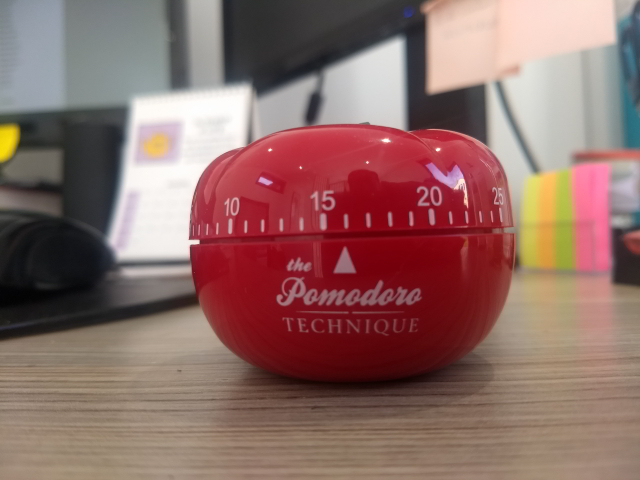By Abi Saffrey
I looked up the dictionary definition for ‘productivity’ (on Lexico).
productivity [mass noun] 1. The state or quality of being productive.
Oh.
productive [adjective] 1. Producing or able to produce large amount of goods, crops or other commodities.
1.2. Achieving a significant amount or result.
Productivity is something that repeatedly comes up in online discussions and ‘build your business’ blog posts, and it’s seen as something that we all have to strive for. Certainly, as a business owner, if I can raise my productivity, I can raise my profits (without increasing my working hours).
As I started to think more about tools that can increase an editor’s or proofreader’s productivity, it dawned on me that there are two main areas where changes can be made:
- the work itself – editing/proofreading more efficiently, and
- the management of the work/your time.
Editing and proofreading productivity
In this category, we have tools like keyboard shortcuts, Find and Replace, Word styles and templates, PerfectIt, macros and predictive text/phrase expanders. These are covered in the CIEP’s fact sheet ‘Increase your editing efficiency in Word’, and its new course Word for Practical Editing (there are even rumours of Efficient Editing webinars in 2021). There’s a whole forum for CIEP members on macros too. Proofreaders can use stamps to add BSI symbols to PDFs (Louise Harnby’s blog – and the accompanying stamps – is a good place to start).
There’s plenty of stuff ‘out there’ on this topic, so that’s enough about that.
All the other stuff
There are huge potential gains to be made from making small changes to the ways we manage our work. In this category, productivity tools can be separated out into four elements:
- increased focus
- distraction reduction
- time monitoring and management
- work management.
(The latter two will be covered in Part 2 – coming soon.)
There are so many apps and tools that you could use to cover these four elements, some free, some with a small one-off cost, others with an annual subscription. There is of course some cross-over between these four elements, so you may decide to use something to track your time and find that it’s also a good way to keep on top of your to-do list. The tools and apps that I mention here are ones that either I’ve used myself or have been recommended by other editorial professionals – there are of course many more out there, and if you’ve got a gem that you think others may like to try, do let me know in the comments.
It’s very easy to procrastinate by searching for the ‘right’ tool to stop you from procrastinating …
The Pomodoro Technique
I’m singling out the Pomodoro Technique because it can help with distraction reduction, increased focus, time monitoring and management, and work management if you take the time to learn the whole technique. Pomodoro is well known for its tomato timer, but there’s also a book to help you master using Pomodoros (25-minute sessions) to manage your daily schedule and predict the time that future projects will take. There are printable sheets to track what you’re doing, what you’re going to do and to log any distracting ‘oh, I need to do that’ thoughts that pop up while you’re in a Pomodoro. And the tomato timer looks cool.
 How to be more productive: Increased focus
How to be more productive: Increased focus
The ticking of a timer (whether it’s a Pomodoro one or any simple kitchen one) can really focus the mind. And its buzzing can really startle you out of your zone!
Several CIEP forum discussions have mentioned apps or websites that provide sounds or music that focus the mind. You can adjust the sounds in Noisli to get your ideal combination of trees rustling in the wind, rain, waves or coffee shop background burble (free and paid plans available). Focus@will offers ‘personalized focus music to help you get stuff done’ (free trial, then paid plans). Spotify divides its playlists into genres and moods: Focus, Chill and Wellness are good places to start (free and paid plans available).
Sometimes what you need to get your focus back is to take a break. WorkRave monitors your keyboard and mouse usage, and gets you to take breaks – and it can enforce a daily computer time limit too (free). The Pomodoro Technique encourages a short break after every Pomodoro, and a longer break after every four Pomodoros. My fitness tracker watch likes me to take 250 steps every hour, and it’ll buzz at ten minutes to each hour if I haven’t managed that (I can tell I’m focused when I think about making up the steps and it’s already 20 past the next hour …) Or just drink a lot of water while you’re working to encourage ‘natural’ breaks.
How to be more productive: Distraction reduction
Is this blog post distracting you from that thing that you said you absolutely must get done today? Sorry about that. Work out what drags your attention away from what you should be focused on. Is it social media, the news, your furry companion, the notifications on your phone? Once you know what your distractors are, you can find ways to get rid of, or at least lessen, them. Pretty much all the distraction-stopping apps ask you to list distracting websites that they will block or limit your time on.
StayFocusd is a Google Chrome add-in that blocks certain websites – add a site to your ‘blocked’ list, decide how long you’re allowed on those blocked sites each day, and get on with what you should be doing. It also has a Nuclear Option so if you absolutely must not look at anything at all on the internet for an hour (or three), hit that button and get focused (free).
If you fancy growing some trees (virtual AND real) while you work, try Forest. Tell Forest how long you want to focus for, and which tree you’d like to grow, and then it won’t let you touch your phone or browse certain websites (if you opt for the Google Chrome extension) for that time. If you try, it’ll give you a good telling-off and make you feel guilty about withering a tree (free and paid plans available).
Freedom is a mobile and desktop app – list distracting websites, set times when you don’t want to use those websites, and watch Freedom’s butterfly tell you that you are free to do other things (I like this positive emphasis). It also has ‘Focus sounds’ – a London coffee shop, a busy Californian office, a beach haven and many other soundscapes can fill your IRL working space (free trial, then paid-for plans).
Keep an eye out for Part 2, which will look at time and work management tools.
 Abi Saffrey is an Advanced Professional Member of the CIEP. She’ll try any productivity gimmick or gadget but really didn’t get on with bullet journaling. A member of the CIEP’s information team, she coordinates this blog and edits Editorial Excellence, the Institute’s external newsletter.
Abi Saffrey is an Advanced Professional Member of the CIEP. She’ll try any productivity gimmick or gadget but really didn’t get on with bullet journaling. A member of the CIEP’s information team, she coordinates this blog and edits Editorial Excellence, the Institute’s external newsletter.
Photo credits: You got this by sydney Rae on Unsplash; Pomodoro Technique timer by Abi Saffrey.
Posted by Abi Saffrey, CIEP blog coordinator.
The views expressed here do not necessarily reflect those of the CIEP.

